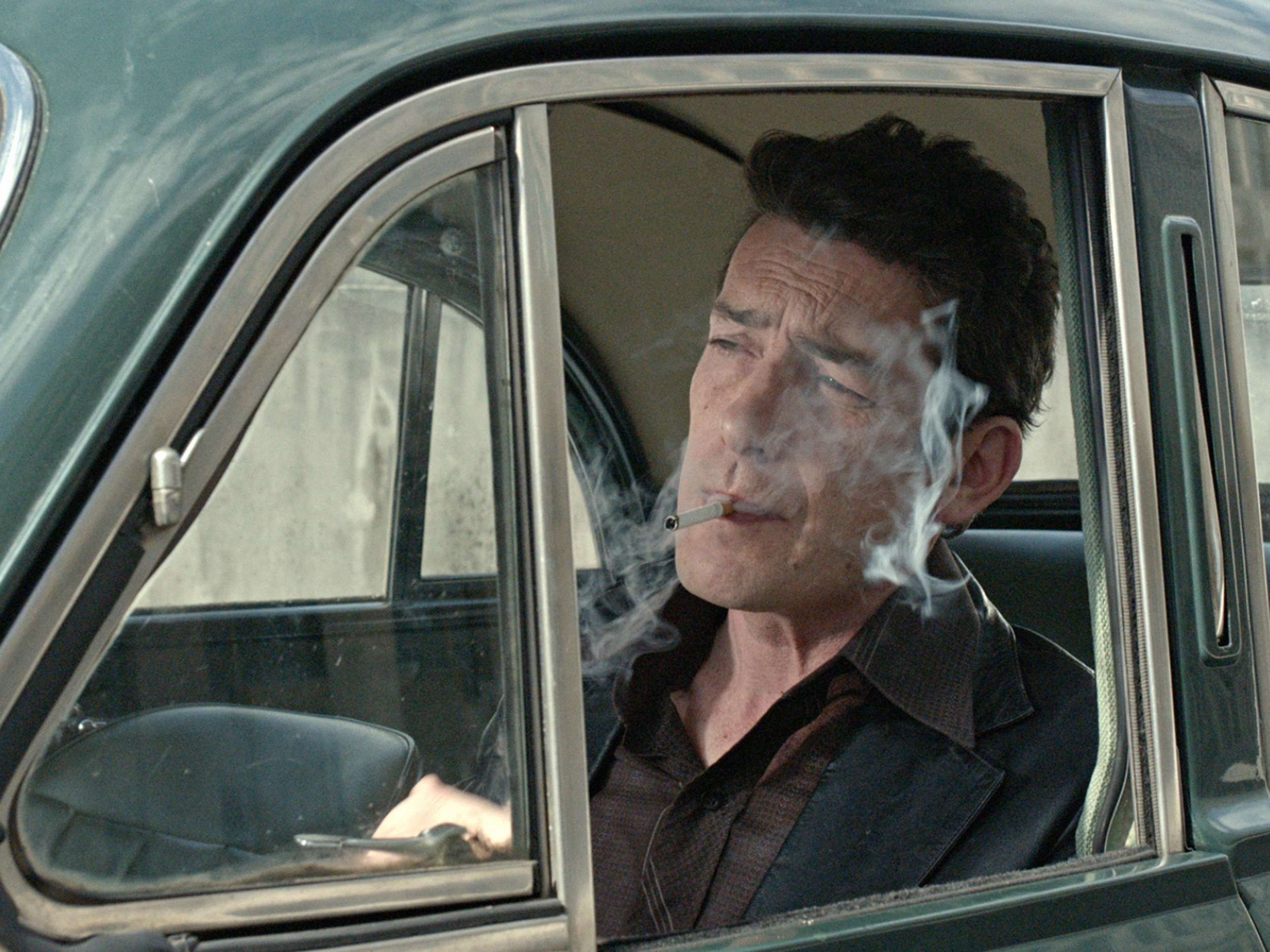STAN DOUGLAS | DAVID ZWIRNER

THE SECRET AGENT
March 31st - April 30, 2016
519 West 19th Street
David Zwirner is pleased to present the United States premiere of The Secret Agent, a new film installation by Stan Douglas on view at 519 West 19th Street in New York. This will be the artist’s thirteenth solo show with the gallery.
The Secret Agent is Douglas’s adaption of the 1907 political novel of the same title by Joseph Conrad. Set in London in 1886, the book recounts an anarchist’s failed plot to bomb the Greenwich Observatory and is considered among the first literary portrayals of modern-day terrorism. Consistent with Douglas’s nonlinear treatment of historical events within his practice, his version sets the action within the context of Portugal’s so-called “Hot Summer” of 1975, which ended the turbulent period between the Carnation Revolution of April 25, 1974 (a bloodless coup to end Europe’s longest dictatorship) and the ratification of a new constitution. During the transition to democracy, which hastened the decolonization of Portuguese colonies, numerous terrorist acts by extreme right- and left-wing groups rocked the country.
While Conrad’s secret agent, Mr. Verloc, worked for an unspecified nation, Douglas’s character by the same name is employed by the US Embassy in Portugal. He struggles to provide relevant intelligence and becomes entangled in an ill-fated plot to bomb the Marconi installation outside of Lisbon, an important telephone connection between the country and North America, and thus an umbilical cord between the Old and New Worlds.
Shooting on location in Lisbon with a cast including local actors, The Secret Agent revisits a decade also explored in Douglas’s series of photographs Disco Angola from 2012 and the film Luanda-Kinshasa from 2013. While these works addressed postcolonial liberation struggles and the African influence on the New York music scene, respectively, The Secret Agent invokes a broader narrative concerning changing notions of collective identity and the legacy of the modernist worldview.
The work is composed of twelve episodes that are paired by scene on six screens. Positioned in the center of the installation, the viewer becomes immersed in a given scene and must adopt the role of an editor to focus attention on any one part of the action. Characteristic of Douglas’s multilayered and nonlinear films, many of the scenes are shot from differing viewpoints and overlap chronologically. The overall narrative is divided into two sections, before and after a main event that is anticipated and dealt with, but never explicitly shown.
As film theorist Eric C.H. de Bruyn has noted, “The Secret Agent establishes many…permutational relationships between the set, the screen and the spectator, but what they have in common is a kind of game of hide-and-seek….Sometimes the viewer will have to piece together the fragments in order to make sense of the scene in its totality. [He or she] is not only situated between two screen surfaces, but is also placed, in a virtual sense, between two connecting halves of the same movie set.”¹
Commenting on the coexistence of history and fiction within the film’s plot, Douglas himself notes: “It enables us to look at transitional moments throughout history in a different way and to reflect on how things might have turned out differently. Maybe we can get closer to the truth by telling a fictional story instead of an obsessive search for strictly factual events. Perhaps exaggeration enables you to portray a time period more accurately than historical precision.”2
In conjunction with The Secret Agent, the gallery will present a survey of Douglas’s photographic works spanning his career. On view at David Zwirner will be series of works from the late 1980s to the present, including the New York debut of the artist’s most recent large-scale digitally rendered photographs, in which Douglas continues his investigations of photography’s complex and layered relationship to documentation, place, and history.
davidzwirner.com